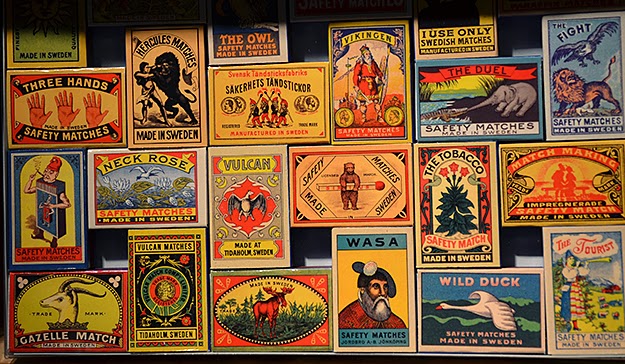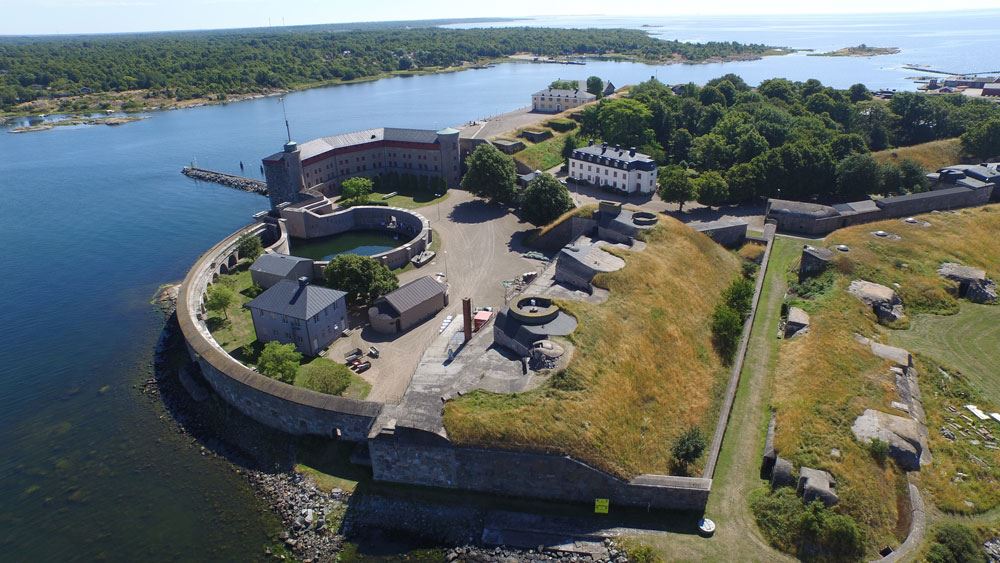Sweden September 12-18, 2018
Day 5
I returned to Sweden from Norway on September 12 hoping to be on the ferry to Finland by the 16th. It will be nice to get back to reasonable prices (by European standards) and sane highways with no tolls and reasonable speed limits.
My Schengen visa was up on September 27 and I still had most of eastern Sweden, Finland, Estonia, Latvia and Lithuania to see. I will probably have to overstay my 90 days to see them all.
From south of Oslo, I drove east across the top of Vänern Lake to Karlstad and then around the east and south shores of this, the largest lake in Sweden.
Karlstad Värmlands Museum. Housed in two buildings, the ‘new’ building was closed for renovations and the ‘old’ building had exhibits on the history of the county plus one called “Paris Fashion Week” that was not too interesting. The museum sits beside a park and the river. NOK60
Vänern Lake. This is the largest lake in Sweden and the European Union and 3rd-largest entirely in Europe. Vänern covers an area of 5,655 km2 (2,183 sq mi). Its surface is 44 m (144 ft) above sea level and it is on average 27 m (89 ft) deep. The maximum depth of the lake is 106 m (348 ft). It forms the boundaries of three provinces: Vastergotland, Dalsland, and Varmland. As it was formed by an uplift separating it from the Baltic, it has species from the ice age not normally encountered in freshwater lakes. The 6th-century Battle on the Ice of Lake Vänern was recorded in the Norse sagas.
It is drained to the south-west by Göta älv, which forms part of the Göta Canal waterway, to Lake Viken into Lake Vättern, southeast across Sweden.
The economic opportunities Vänern offers are illustrated by the surrounding towns, which have supported themselves for centuries by fishing and allowing easy transportation to other cities or west by Göta älv to the sea of Kattegat. This directly includes: Karlstad, Kristinehamn, Mariestad, Lidköping, Vänersborg, Åmål and Säffle.
The Djurö archipelago surrounds the island of Djurö, in the middle of the lake, and has been given national park status as Djurö National Park.
The ridge (plateau mountain) Kinnekulle is a popular tourist attraction near the south-eastern shore of Vänern. It has the best view over the lake (about 270 metres (890 ft) above the lake level). Another nearby mountain is Halleberg.
Vänern has two native sub-groups of lake salmon developed in Vänern for over 9,000 years. They are notable in that they have never entered the ocean. These large lake salmon are known to weigh some 18 kilograms (40 lb). The world’s largest lake salmon, exceeding 20 kilograms (44 lb), was caught in Vänern.
Cormorants vanished in the 19th century, but have since returned and are flourishing. This has contributed to the increase in the population of sea eagles, who feed on cormorants.
Torsö Island, Vänern Lake. A wonderful curving bridge with a high arch joins Torsö to the south shore of Vänern Lake. The island is mostly treed and is a holiday destination for Swedes with at least 4 swimming beaches. Brommö and other small islands surround Torsö.
GÖTA CANAL
I crossed the canal at its entrance to Vänern Lake. There were two locks and a bridge that swing up to let boats through. constructed in the early 19th century. It formed the backbone of a waterway stretching some 614 km (382 mi), linking a number of lakes and rivers to provide a route from Gothenburg (Göteborg) on the west coast to Söderköping on the Baltic Sea via the river Göta älv and the Trollhätte kanal, through the large lakes Vänern and Vättern.
The canal itself is 190 km (120 mi) long, of which 87 km (54 mi) were dug or blasted, with a width varying between 7–14 m (23–46 ft) and a maximum depth of about 3 m (9.8 ft). It has 58 locks and can accommodate vessels up to 32 m (105 ft) long, 7 m (23 ft) wide and 2.8 m (9.2 ft) in draft. Göta Canal is a sister canal of Caledonian Canal in Scotland, which was also constructed by Thomas Telford.
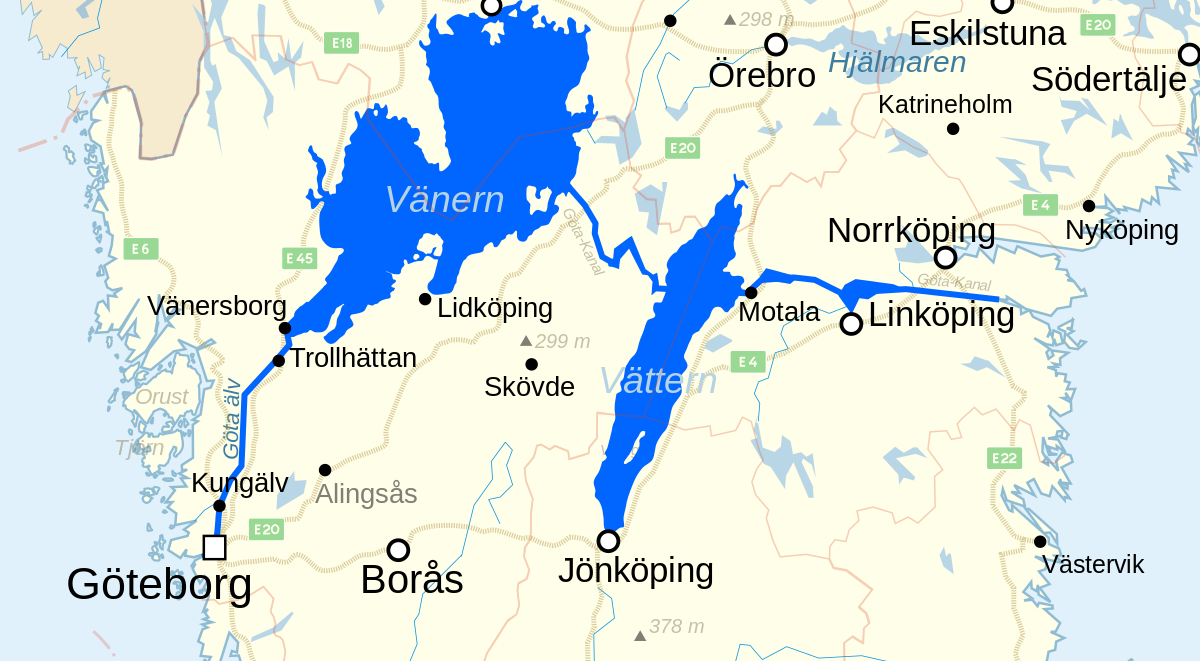

History. Started in 1810, it was the greatest civil engineering project ever undertaken in Sweden requiring 22 years and 58,000 workers. Much of the expertise and equipment had to be acquired from abroad, notably from Britain. The Scottish civil engineer Thomas Telford was instrumental early and along with many other British engineers and craftsmen were imported along with equipment – even apparently mundane items such as pickaxes, spades and wheelbarrows.
The Göta Canal was officially opened in 1832. However, it was never an economic success. The arrival of the railways in 1855 quickly made it redundant, as trains were faster and did not have to shut down in winter, shut down the canal for five months of the year. By the 1870s, the canal’s goods traffic had dwindled to forest products, coal and ore, none of which required rapid transportation. Traffic volumes stagnated after that and never recovered.
Justifying the canal’s construction was the onerous Sound Dues imposed by Denmark–Norway on all vessels passing through the narrow Øresund channel between Sweden and Denmark. The canal enabled vessels travelling to or from the Baltic Sea to bypass the Øresund and so evade the Danish toll. In 1851, the tycoon André Oscar Wallenberg founded the Company for Swedish Canal Steamboat Transit Traffic to carry goods from England to Russia via the canal. However, it only ran two trips between St Petersburg and Hull via Motala before the Crimean War halted Anglo-Russian trade. After the war ended, the great powers pressured Denmark into ending the four-hundred-year-old tradition of the Sound Dues, thus eliminating at a stroke the canal’s usefulness as an alternative to the Øresund.
The canal had one major industrial legacy in the shape of Motala Verkstad – a factory established in Motala to produce the machines such as cranes and steam dredgers that were needed to build the canal. This facility has sometimes been referred to as the “cradle of the Swedish engineering industry”. After the canal was opened, Motala Verkstad focused on producing equipment, locomotives and rolling stock for the newly constructed railways, beginning a tradition of railway engineering that continues to this day in the form of AB Svenska Järnvägsverkstädernas Aeroplanavdelning (ASJA) that was bought by the aeroplane manufacturer SAAB in Linköping.
Trollhätte Canal
The Trollhätte Canal with six locks is now part of the Göta Canal system. It connects the Göta älv river with Lake Vänern. The maximum dimensions for a boat to traverse this canal are: Length: 88 m. Width: 13.20 m. Mast height: 27 m. Depth: 5.40 m. This allows ocean-going ships. Around 3.5 million tons of goods are freighted annually on Trollhätte Canal. Today, parts still transport cargo, but it is now primarily a tourist and recreational attraction, dubbed Sveriges blå band (“Sweden’s Blue Ribbon”). Around two million people visit the canal each year on pleasure cruises – either on own boats or on one of the many cruise ships – and related activities. The canal is called the “divorce ditch” because of the troubles that couples have to endure while trying to navigate the narrow canal and the many locks by themselves.
Skovde Stadsmuseum, Skovde. The city museum for this small city is very quaint. Around the outside of the large “warehouse-like” building are piles of objects people no longer wanted, all organized into categories: transport, musical instruments, toys, tools, household items, religious items and a lot of furniture, especially chairs. The stuff covers several wall shelves and the floor of each section. There are no labels and little of it would qualify for a large museum. But it is wonderful and I hope no one decides to curate it. In the middle are some dioramas all in Swedish – one was on the cholera epidemic of 1830 and the Dr’s attempts to control it. Free.
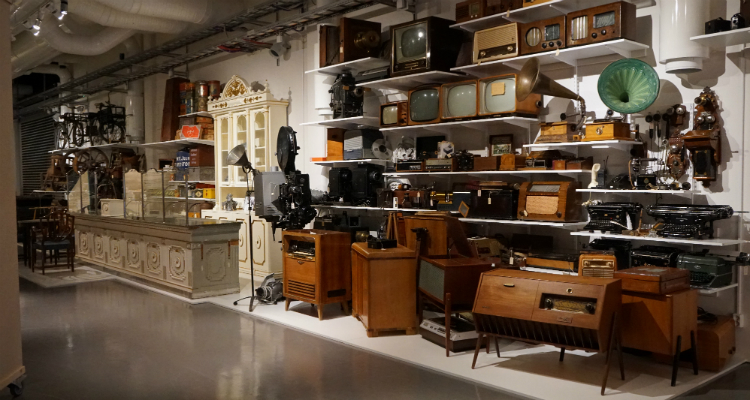
Radios, phonographs
VARNHEM ABBEY (Kloster kyrkan). The Cistercian Order was established in 1098 in Citeaux in France and they established monasteries all over Europe. The monastery at Varnhem was established in 1150 (and was the largest monastery in Sweden) but was badly damaged in a fire in 1234, rebuilt and consecrated in 1260 as the largest church in Sweden at the time. The Reformation led to the closure of all monasteries, Varnhem was abandoned in 1533 and left to decay.
In the mid 17th century, Magnus Gabriel de la Gardie restored the church and turned it into his burial church – removed the screens, new pulpit, pews and organ gallery, built the buttresses, central tower over the crossing and 2 smaller towers. He donated the church to the parish. A rose window was added in 1889 and a 1918-23 restoration removed the added wood floor to uncover the stone floor and burial slabs below. The tombstone over Birger Jarl’s grave was returned to its original position. He was a wealthy noble, married the king’s sister and became jarl, the king’s right-hand man. He created the first Swedish taxation authority, built castles and founded towns laying the foundation for a new social system and a Roman Catholic monarchy. In 1261, his wife died and he married dowager queen Mechthild of Denmark. He rebuilt the church after the fire.
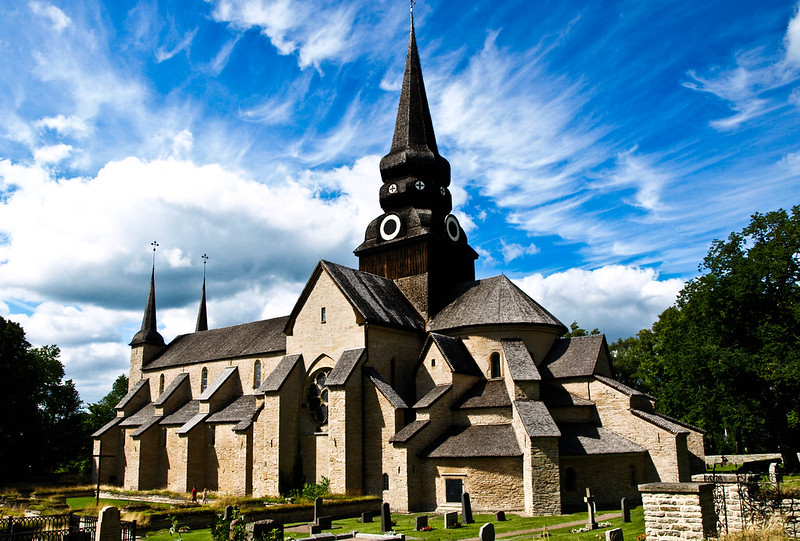
His grave is a highlight – Birger Jarl (1210-1266), his son Duke Erik (d. 1275) and the Danish dowager Queen Mechthild (d. 1288) are carved on the top.
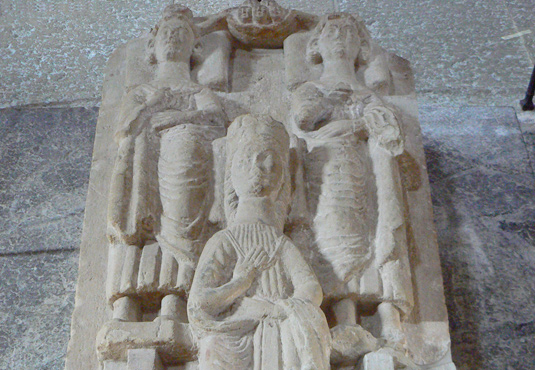

The abbey contains a console-portrait of Birger jarl, the oldest portrait in Sweden and is carved in the sandstone high up next to a column on the left.

Other highlights are the carved pulpit, organ surround, several large tombs of the Erik dynasty of Swedish kings in each of the chapels behind the altar, baptismal font covered with a great brass plate and the oldest osteosynthesis (a fractured humerus was repaired using a copper plate and is displayed in another showcase). The interesting ruins of the monastery are beside the abbey and are well labeled in English. Free

Sommarland, Skara. This is another large amusement park with rides, carnival games, restaurants and fast food. It closes for the season at the end of August.

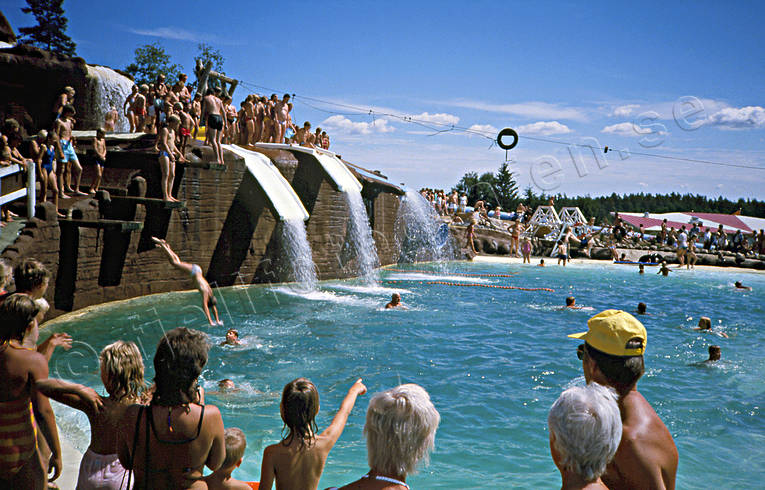
HABO CHURCH. Called the “Wooden Cathedral”, this completely wood church was built in 1680 on a site with previous churches dating to the 12th century.

The rough wood interior walls were completely painted by two local artists in 1741-43 (each had his own style discernable as they each painted one side). It is magnificent: the side walls have faux stone blocks, the columns and pews faux marble and Luther’s 10 catechisms cover everything else: the 10 commandments and Lord’s Prayer on the side walls and the creed and baptism on the ceiling.


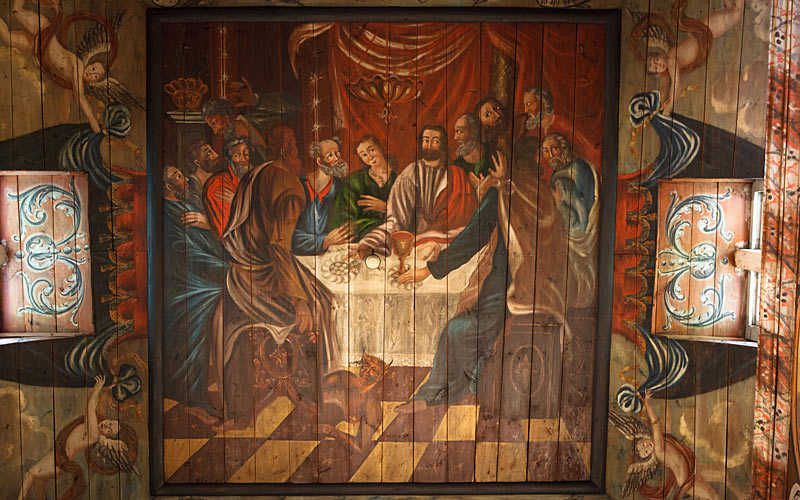
The 14th century altar, 1723 pulpit

and organ are all carved wood. The 1250 sandstone font is the oldest object in the church. A Rembrandt bible is in a back room.
Men and women sat on opposite sides of the church and the gentry were in special boxes at the front. In the 18th century, there were 2000 in the parish and now there are 600 seats in the church.
Equally outstanding is the separate 1760 bell tower. The outside is red with white trim and a black roof. The church is just north of Jonköping.
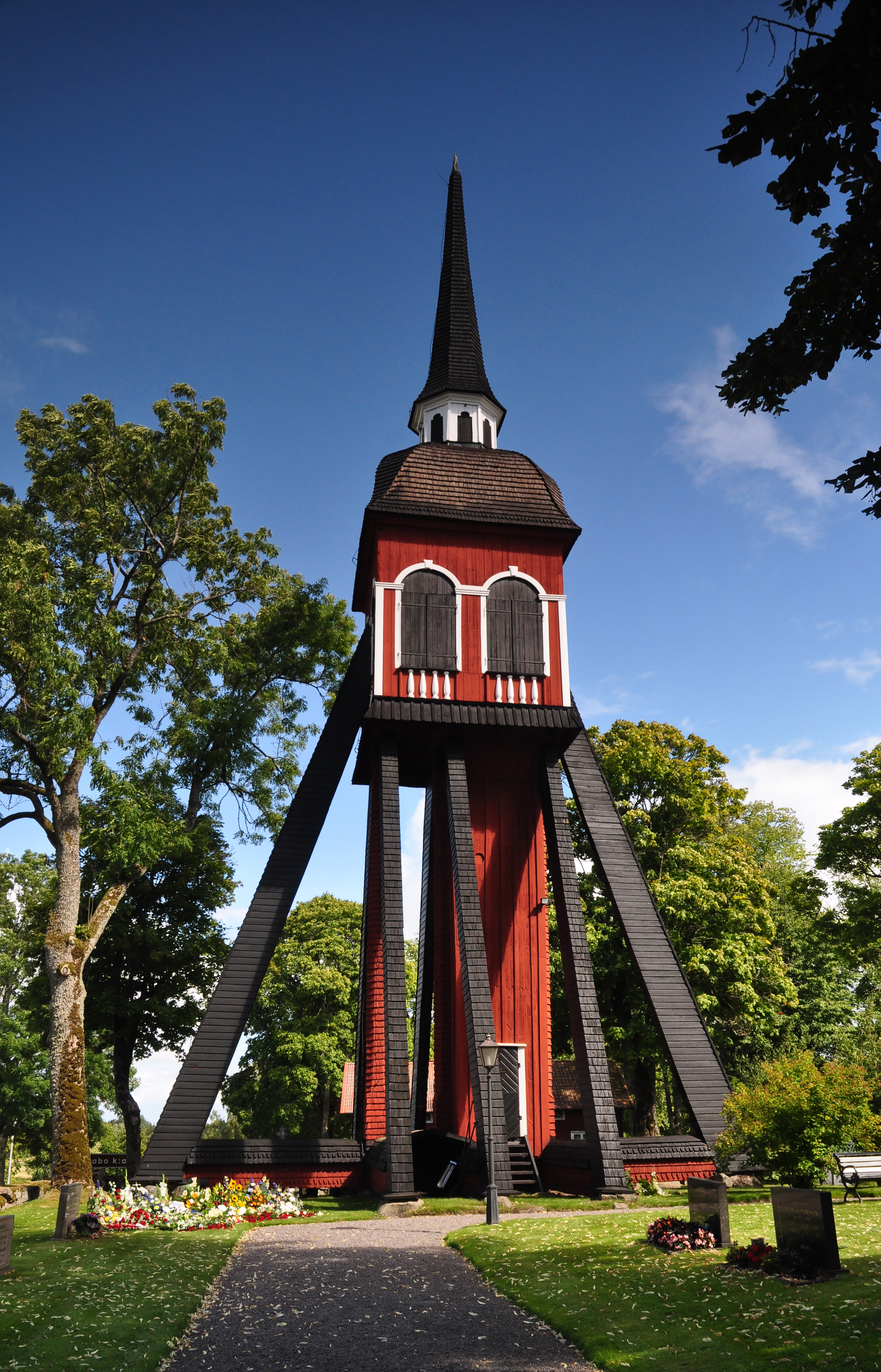
Don’t miss this one. Seeing this church gave me the idea to write a post “Best Christian Churches in the World”.
Day 6
SMÅLAND
This large province in southern Sweden is covered in dense forest of pine and spruce, lakes and marshland. Historically it was a buffer between the Danes and the Swedes who were forever having territorial issues. Today it is known for its glass – Orrefors, Kosta and Boda are common brands. The Kingdom of Crystal (Glasriket) between the cities of Kalmar and Xäxjö, has many shops and glass works. Kosta is where it all began in 1742 and Orrefor has the largest manual blowing room in Sweden.
Canoeing on the many lakes, streams and river canoe routes is popular: Helga River, 86km long Nissan River, Emån Canoe Trail, Lake Ståken and the Tidan River. Sea kayak in the archipelago of Misterhult or at Västervik with its 5,000 islands. There are 30,000 moose in the county and can be seen easily at “moose parks”.
JONKOPING
Situated at the southern tip of Lake Vättern, this is the biggest city in Småland.
I slept near the matchstick factory in front of a business that had good wi-fi and no password. Unfortunately I started watching snooker on YouTube and didn’t get much done. Ronnie O’Sullivan, the world’s best player is something to watch.
Tandsticksmuseet (Match Museum). In a wonderful old district of Jonköping, this is the only match museum in the world. In an old match factory, it tells the story of the workers with all the machinery needed in the process. There are thousands of matchboxes and labels with a wide range of match products in the shop. SEK80
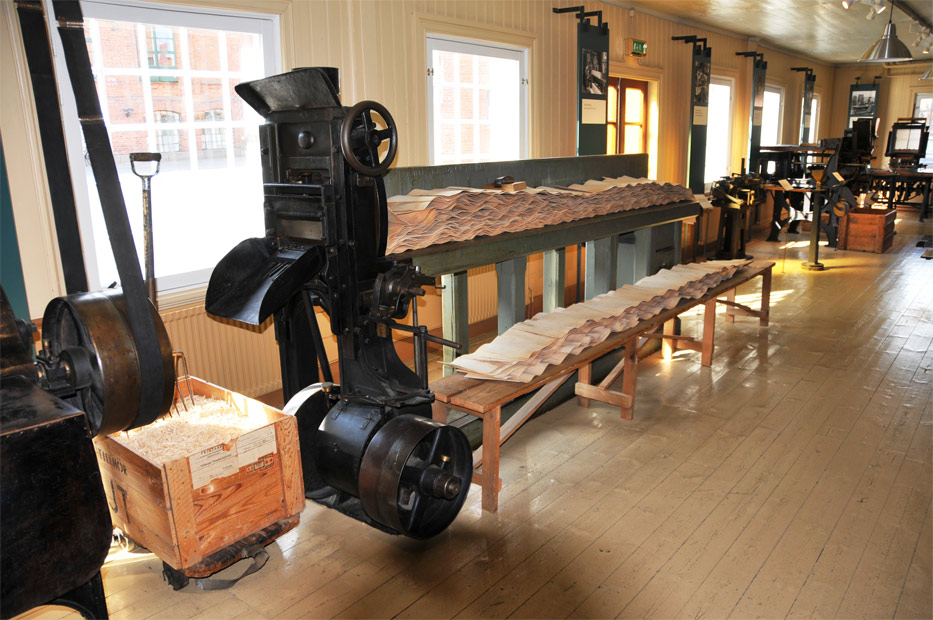
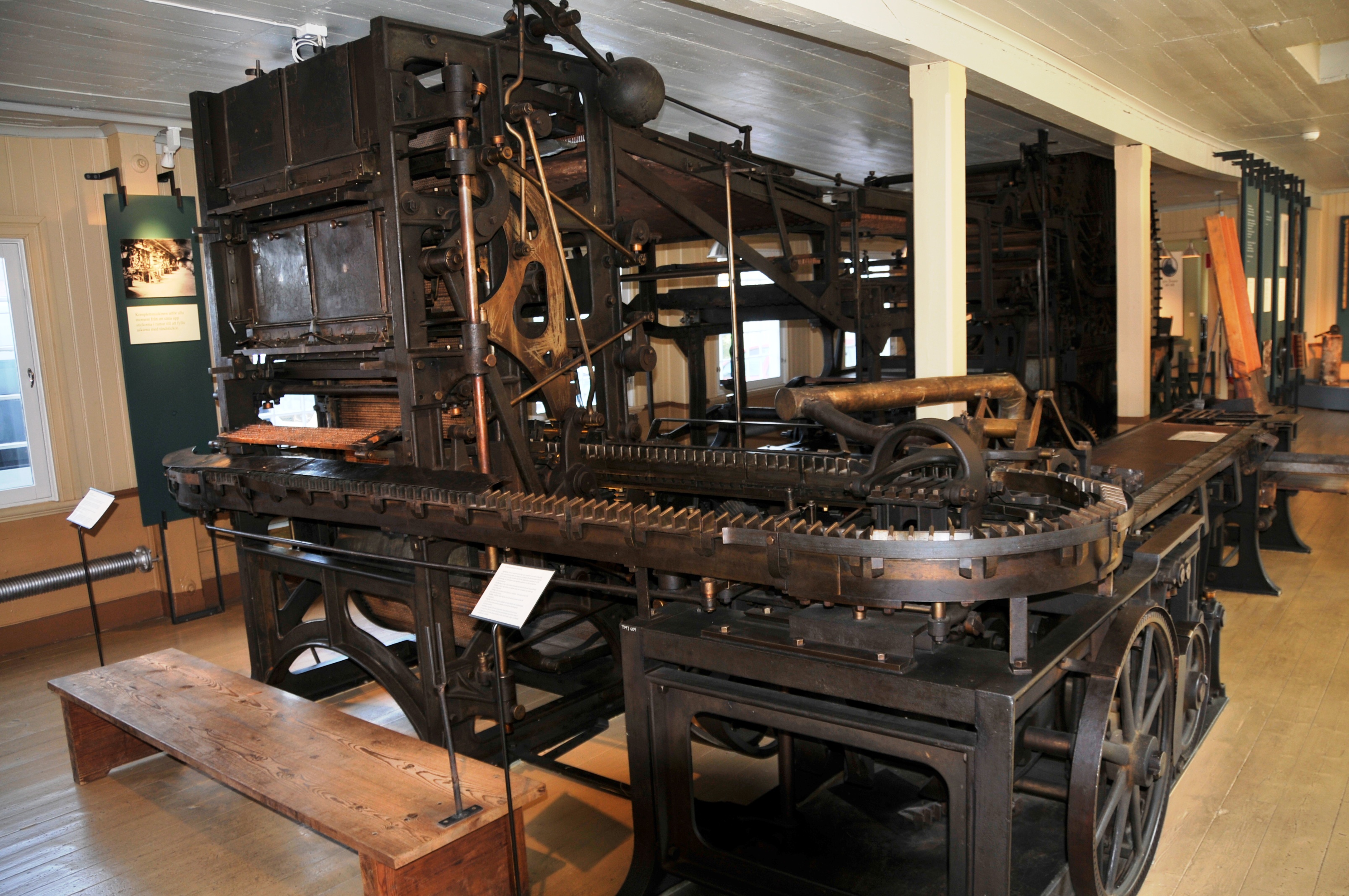
VÄXJÖ (pop 90,000)
Smaland Musuem. The prime exhibit is about the 500 year old glass industry with medieval glass goblets to cutting-edge glass sculptures. There a Guinness record 71 cheese-dish covers. NOK90
Svenska Kyrka. With an orange exterior and 2 great copper steeples, this church is worth entering to see the glass works. The fantastic altar is a magnificent glass screen made by Bertil Vallien (see the small “working screen” at VIDA Gallery on Öland).
KARISKRONA (pop 67,000)
This military-base city is included in the UNESCO World Heritage for its impressive collection of 17th and 18th century naval architecture. It was the failed Danish invasion of Skáne in 1679 that sparked the decision that southern Sweden needed a naval base for better control over the Baltic Sea. The naval headquarters of Sweden were moved from Stockholm to Kariskrona in 1679. Almost immediately, Kariskrona became Sweden’s 3rd biggest city. The harbour is fronted by several islands that can be visited on a boat tour in the summer.
The Marin Museum sits on the island of Stumholen, once the production and provisioning area of the navy and part of the WHS. The island became public in 2104.
Kungsholms Fort. Established in 1680 on an offshore island, this can only be visited in two-hour guided boat tours that must be booked through the Tourist Office. It has a curious circular harbour.

Marinmuseum (Navy Museum). As with all maritime museums, this one has more than its share of ship models. Some of the more interesting exhibits are the figureheads, the Cold War, diving and the Wreck Tunnel, an underwater corridor to see parts of old wrecks in the murky green water.
The submarine exhibit is superb with models of every submarine in the Swedish Navy. Two are inside the museum: the 1905 Hajen (the “shark”) was the first submarine in the navy and the Neptun, a modern submarine that you tour – it is very interesting to see the inside of a submarine. There were only 3 beds for the 12 crewmen –they shared in 6-hour shifts.
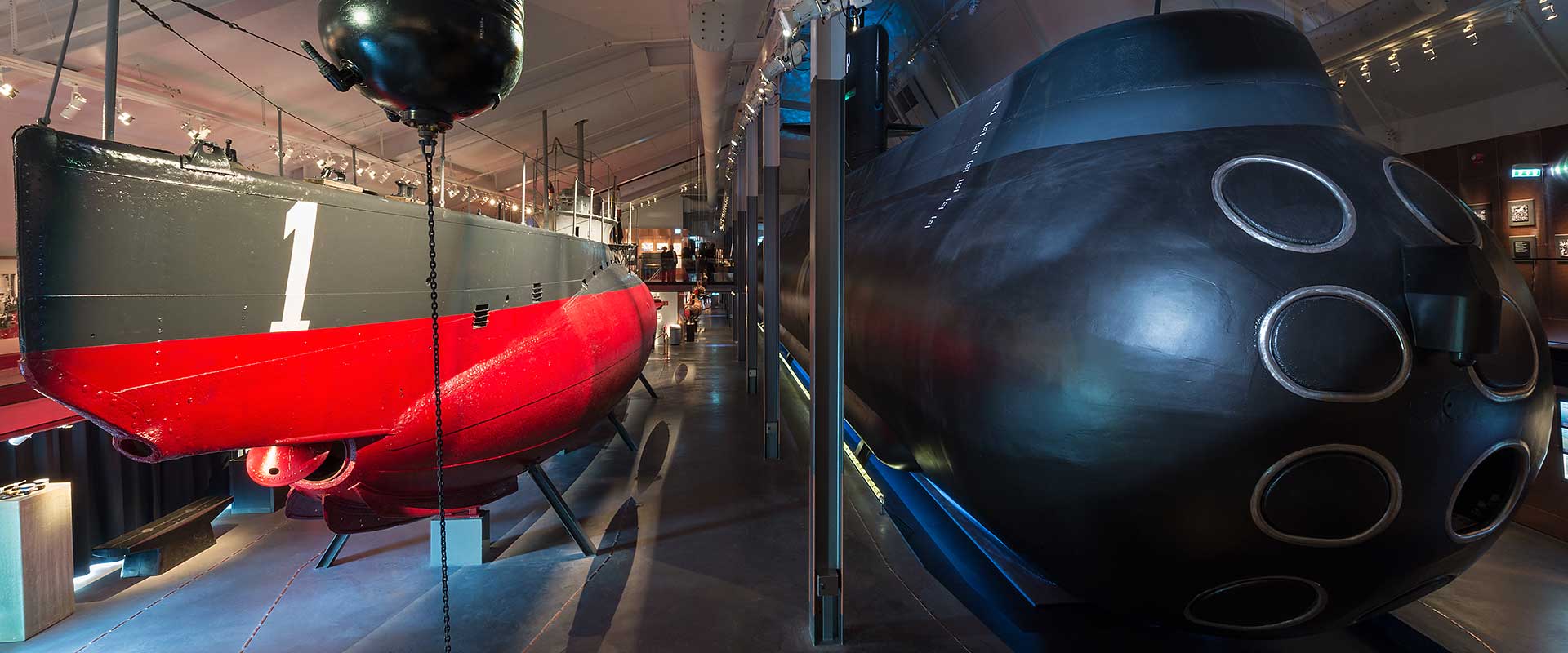
Outside is the 1900 Jarramus, the 3-masted steel sailing ship with a top speed of over 16knots and the last sailing ship built for the navy.
Military conscription ended in 2010 but was reinstated in 2017 as there were so few volunteers.

Amiralitetskyrkan (the Royal Navy Church). This church was built in 1685 to serve the navy. Completely made of wood, it is surprising it has survived with no fires.

When built, it held 3000 but the upper levels of the balconies have been removed. An imposing red building, inside is pretty – all white with blue pews and a lovely painted dome (when repainted in the 1940s, one of the painters, feeling that he had been underpaid, painted a devil up there). Outside the church stands a magnificently carved wooden alms box in the form of Mats Rosenbom, a famous citizen who became a beggar and eventually froze to death. His hat has to be lifted to insert coins into a slot in his head.
It still holds Sunday services and is open regularly in the summer. The caretaker opened the church and kindly gave me a tour. Free


Bliekinge (County Museum). Telling the history of the city and area, it has a harpoon dating from 6400BC, modern glass, art including some nice small bronzes and boats and exhibits on shipbuilding. A salvaged 1480 ship is on display. Free
KALMAR (pop 67,000)
Sheltered from the wild Baltic Sea by the island of Öland.
Kalmar Konstmuseum. Housed in a purpose built, unique, 4-story tower, this contemporary art museum has the usual contemporary art. The two exhibits were on alchemy (but here used for traditional medicine) and Transfashion, an exhibit on clothes. NKO50

Kalmar Slott. A stone tower was built here in 1180 and a ring wall added in the 13th century. The Kalmar Union was formed here in 1397 joining Sweden, Norway and Denmark into one country to counter the powerful German states of the Hanseatic League (it was dissolved in 1523). In 1544, ramparts, 4 cannon towers, one on each corner, and royal apartments converted it into a renaissance palace used by the Vasa kings of Sweden. It was eventually used less by the royals and became a women’s prison, distillery and a depot. The present castle looks as it did when used by royalty. Visit the banquet hall, Queen’s bedroom Golden Hall and the church plus rooms with many exhibits. NOK130

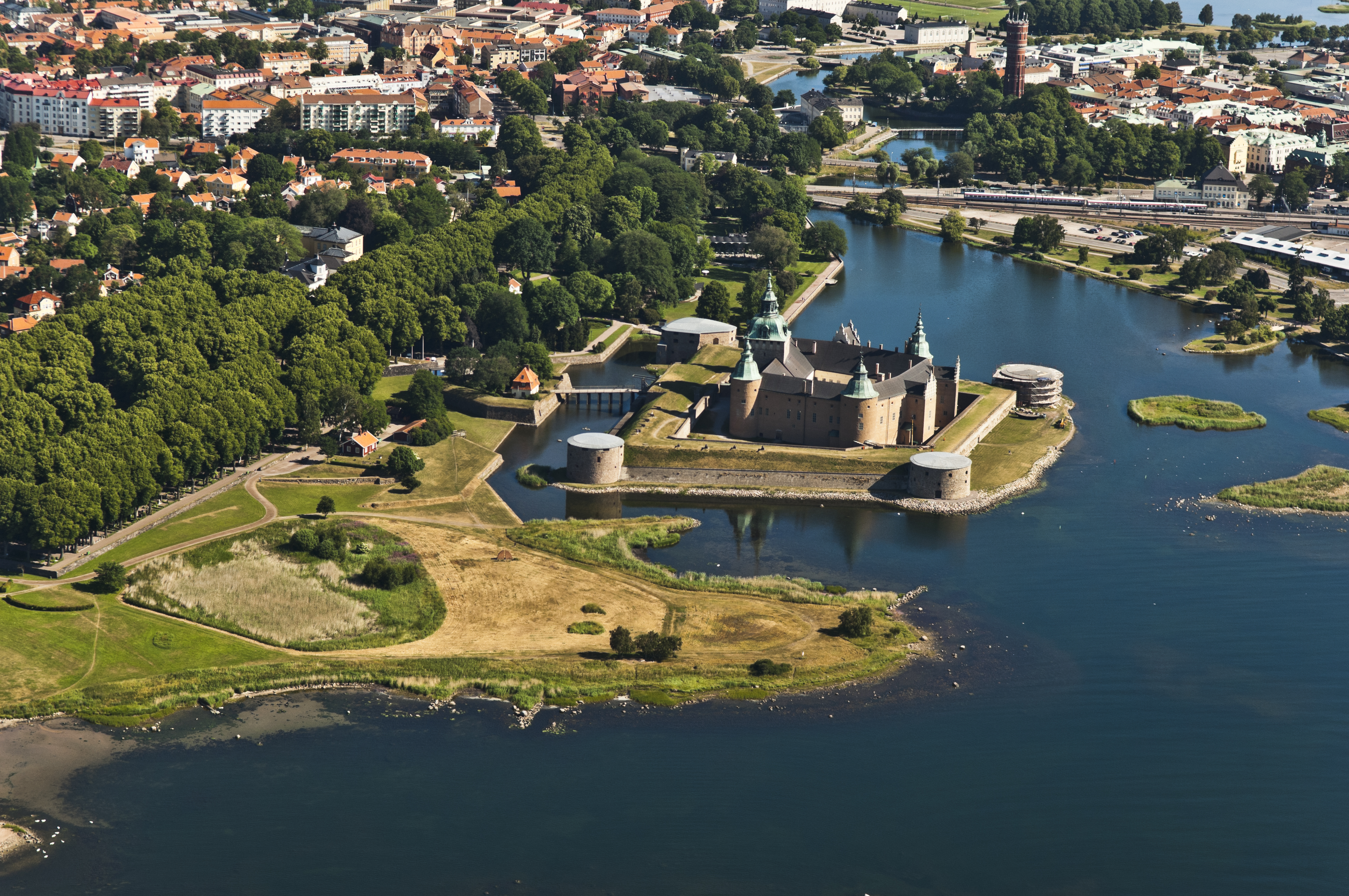
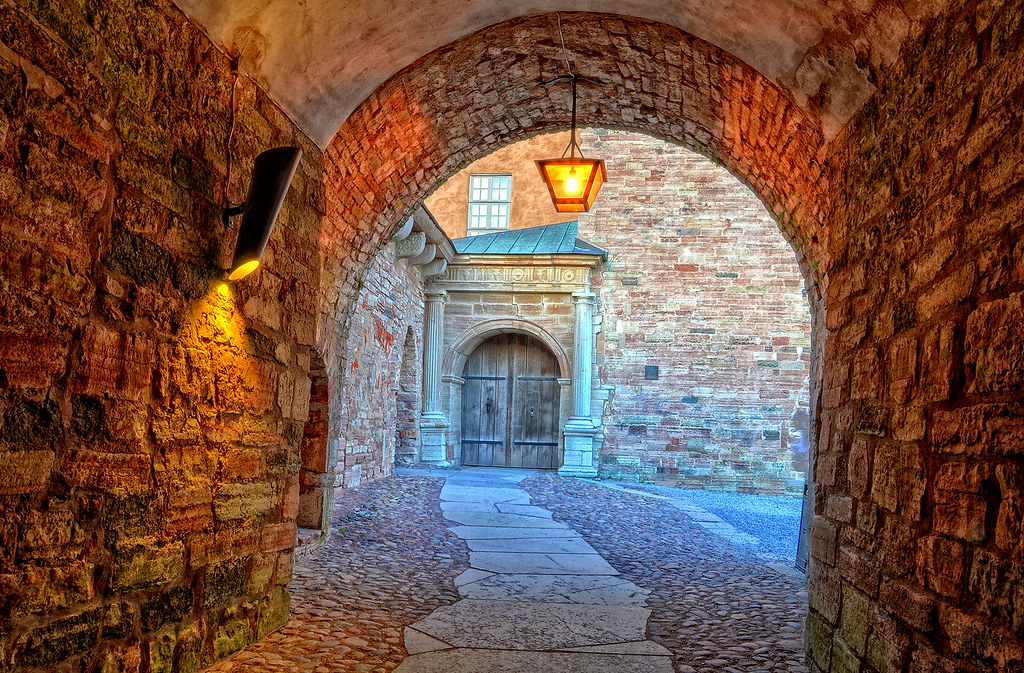
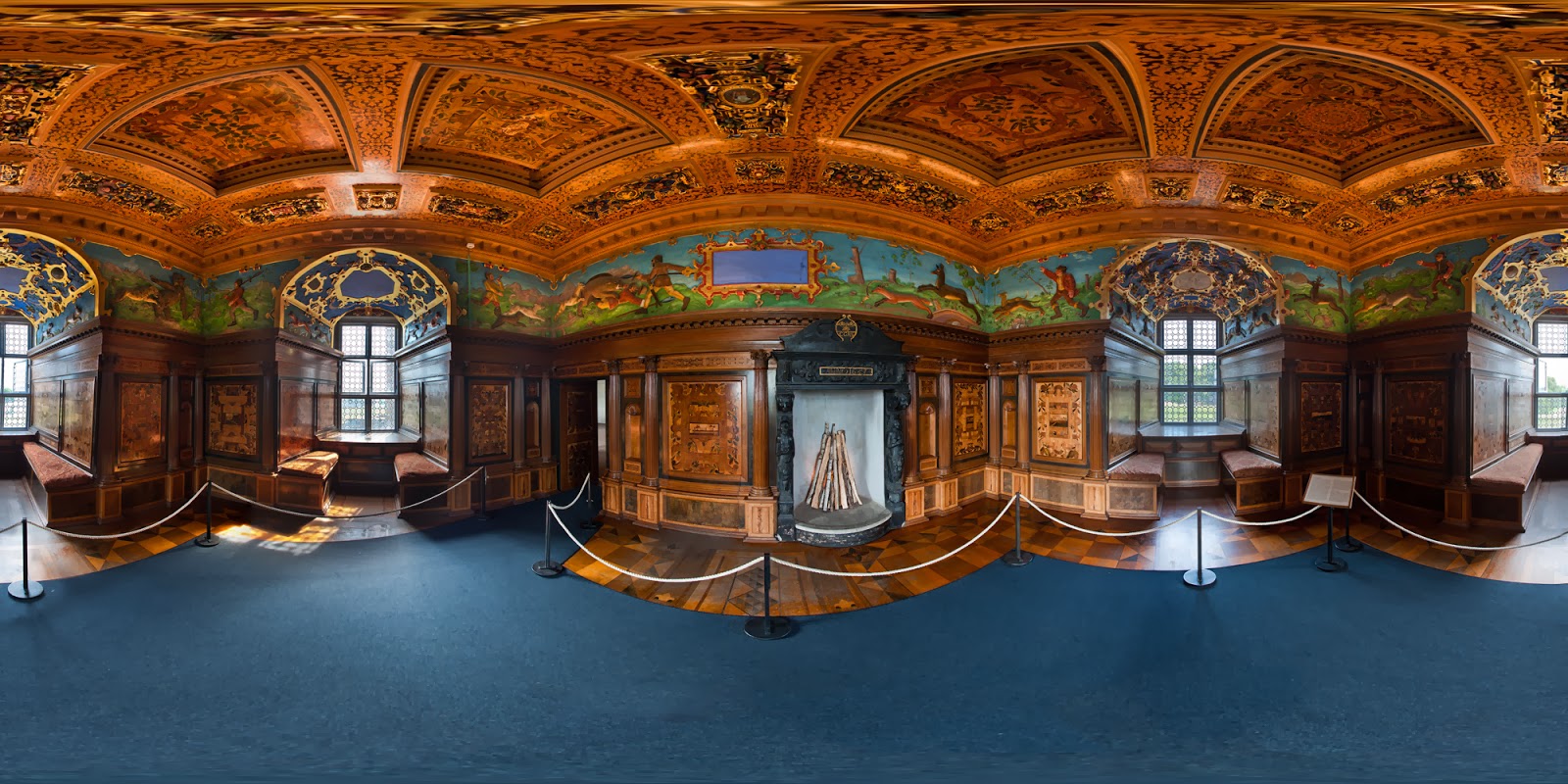
Kalmar Läns Museum (County Museum). The main exhibit here is the ship Kronan, a Swedish warship that capsized and sank in 1676 during a battle with the combined Danish-Dutch fleet, one of the biggest maritime disasters in Swedish history.
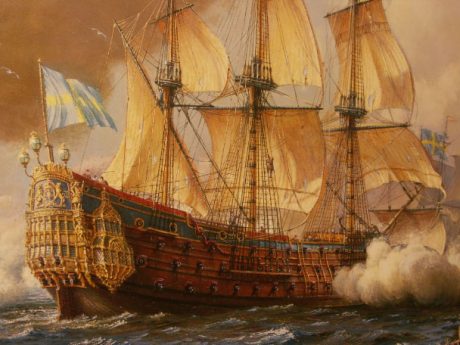
According to Einarsson, the Kronan sank when it turned with too much sail to face its Danish-Dutch enemies. The hefty ship soon fell flat on its side, … The 53 by 13m ship had 116 bronze cannon and carried 550 soldiers and 300 sailors. It was rediscovered in 1980 with more than 30,000 artefacts salvaged. The highlights are 255 gold coins from the 15th century to 1676 including two 10-ducat coins, most produced by the Holy Roman Empire. A trunk had a completely intact set of clothes and a 100 gram gold spoon. SEK90
ÖLAND ISLAND
Reach via the whopping 6km-long Öland Bridge.
BORGHOLM (pop 3700)
Öland’s capital and busiest town, it can be packed in the summer. It is in the NM “small town” series.
Borgholm Slott. Northern Europe’s largest ruined castle, the epic limestone square castle was burnt and abandoned early in the 18th century after life as a dye works. It has round towers on each corner and is surrounded by a big wall, moat and dirt embankment. It is an impressive site sitting on the seashore. There is a good museum inside and holds summer concerts. NKO95

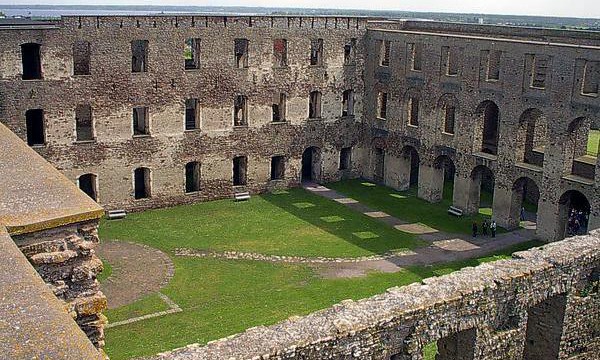

VIDA Konsthall. 9kms south of Borgholm is this lovely 5-gallery museum. Its permanent exhibition is on Sweden’s most famous glass artists, Bertil Vallien


and Ulried Hydman Vallien, a husband/wife team. She paints on glass but I much preferred his sand cast pieces, including the model for the Växjö church altar screen. The other 3 galleries had lino cut prints and a large chair exhibit. NKO100
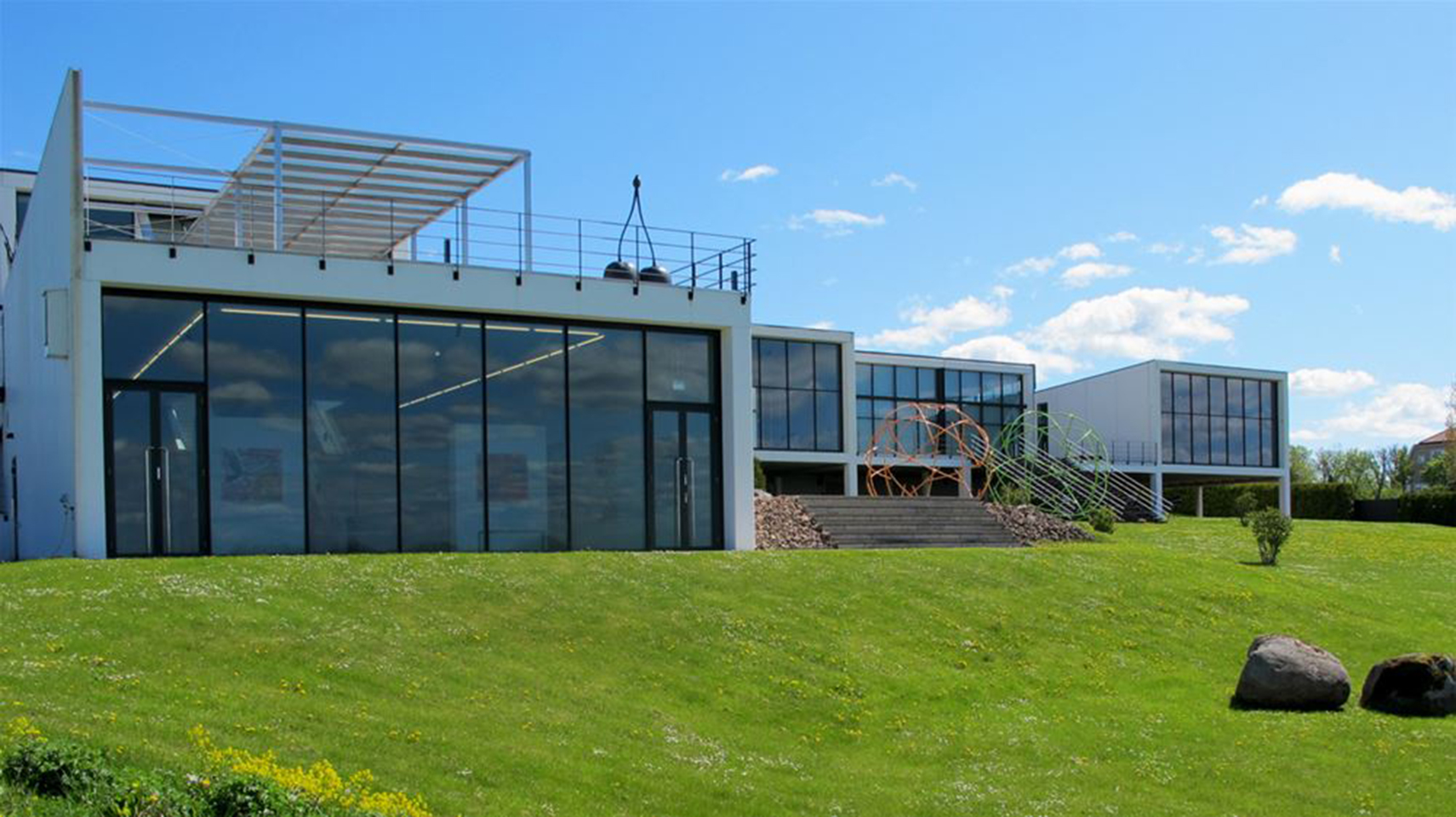
AGRICULTURAL LANDSCAPE OF SOUTH ÖLAND. This is an area of more than 56,000 hectares with the great alva, a dagger shaped 40km long by 10kms limestone plateau half of it. It is the most extensive of its kind in Europe. Humans have lived here for some 5,000 years adapting their way of life to the physical constraints. There is abundant evidence of continuous settlement to the present day. As a result of the thin layer of soil and high pH levels, it supports a wide range of plant species. It was designated UNESCO World Heritage status in 2000 for the extraordinary biodiversity, its prehistory and how man has adapted to the natural conditions. The limestone itself was formed about 500 million years ago in sea to the south, hardened and drifted north. It thus has a rich fossil record. Combined with a warm, dry climate the infields were used for planting and the alvar plains and coastal lands for grazing. The barren soil could not support the forests so characteristic of the rest of Sweden.
Today the islanders farm land that has been ploughed for generations and put livestock out to pasture that has been grazed for millennia, a unique situation demonstrating human ingenuity and the resourceful use of a diverse landscape not at first site favourable to human settlement and exploitation. The medieval land-use pattern of villages and field systems marked by stone walls showing the boundaries between land holdings, still clearly visible, a very rare survival in Northern Europe.
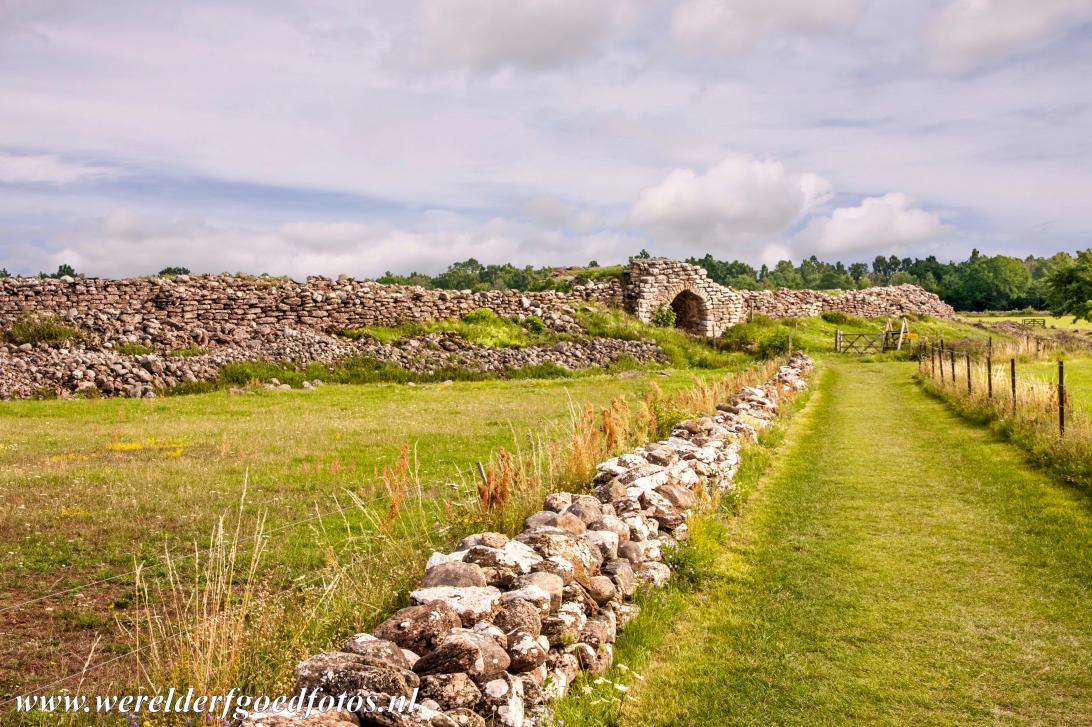
There are a large number of archaeological sites. Alby is a Paleolithic settlement on the east coast with vestiges of wooden huts around a small prehistoric lake. Found were hunting and harvesting technologies such as spears and harpoons made from antlers and flint. During Bronze and Stone Age times, the limit tree species caused a mysterious disappearance of humans around 500BC, possibly due to the expanding human population exceeding the carrying capacity. Viking settlements developed between 800 and 1000.

I drove to Alby (it was not obvious where the prehistoric settlement was) and basically drove back west across the island. This gave me an informative idea of the landscaped described – flat, treeless, grass with scrub, no crops, thin soil with limestone showing through in places and crumbling rock walls constructed from limestone. This was all grazing land not suitable for crops and extended completely across the island. Crops grew east of Alby and south of the turn at the west end.
Eketorpborg. On the SE corner of the island is this living history museum in a rebuilt walled fort from 300AD with costumed staff and animals.
Day 7
I crossed the Öland Bridge and drove north for another big travel day.
Malilla Sanatorium Museum. In the NM “museum” series, there has not been a museum here for several years. It was also impossible to find on Google Maps and I had to use investigative skills to find it – put in Moliljan Hotel & Restaurant, as it was a hotel at one time. It is locked up now and not used for anything.
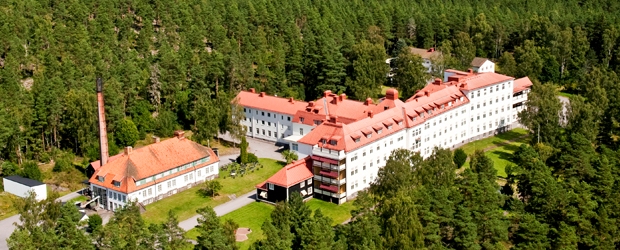
Malilla Sanatorium was a lung tuberculosis hospital built in 1912-15 and had 300 patients in the 1930s. The last patient was discharged in 1973, the building became a hospital, then the Moliljan Hotel and Restaurant, a museum from 2000-16 and now appears to be closed completely.
VIMMERLY
Astrid Lindgren’s Värld (World). This famous children’s book author’s stories (Pippi Lonagstocking) are brought to life with performances by actors. This would only appeal to children or Swedish adults with a special affection for her, especially at these prices. Don’t confuse this with Astrid Lindgren’s Näs, her nearby childhood home. NOK270, 165 if >65

LINKÖPING
Air Force Musuem (Flygvapen Museum). Situated west of the city at a airport, this has a great collection of old planes (mostly Swedish and German), an exhibit on the Cold War and a scientific exhibit upstairs. Free
Lingköpings Domkirke. This is a huge church was started in 1230 and took 300 years to build. The 107m tower was added in the 1880s. A few bits of the preceding 12th century church are still in place. with a lot of special art inside (funded by a foundation). The Tree of Life is a 1997 masterpiece with 9 glass fruit hanging on a stainless tree. The 1740 pulpit has wood carvings illustrating bible stories. The 15th century bronze baptismal font has images of Jesus’ disciples. A wooden cross from the 14th century that miraculously survived several fire incidents in the cathedral hangs from a 13th century rounded Roman arch.

The altarpiece is a 1937 3-panel painting with a controversial blond, blue-eyed Jesus.
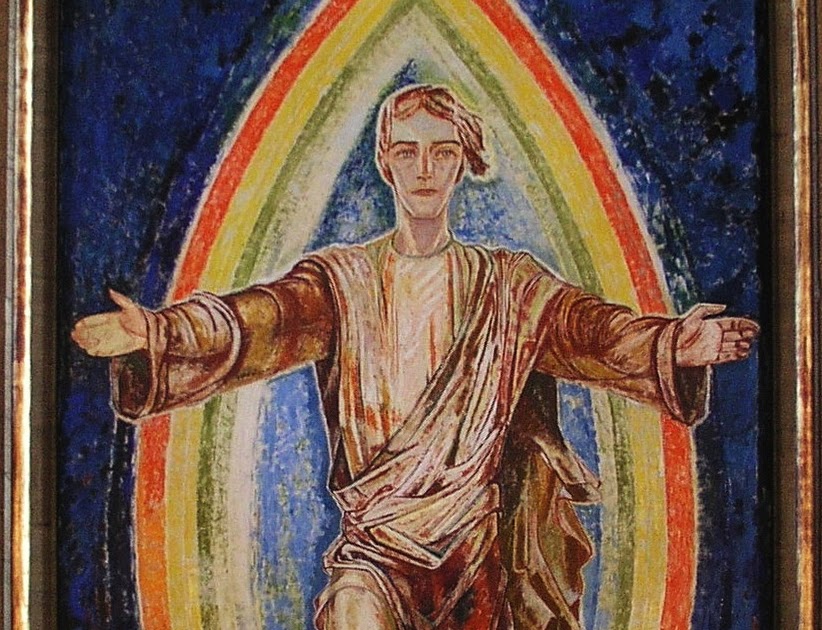
Wonderful 1938 tapestries tell the creation story. The masterpiece is the Mary Window – 3 windows of engraved glass with great leaf patterns.
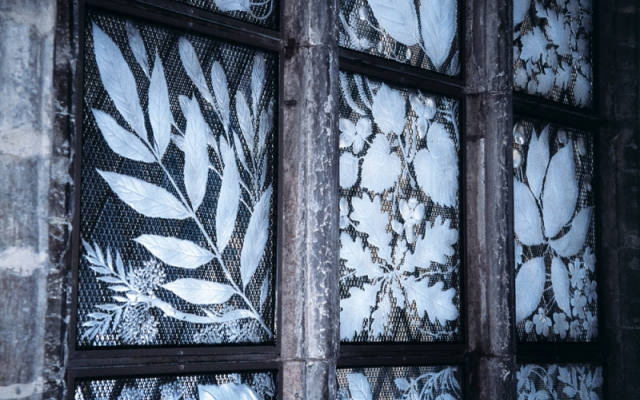
In the floor are enlargements of 12 glass beads in a bracelet given to the late bishop. Free

Linköpings Slott. Housed in a unimpressive building from the outside, it has the original 12th century bishop’s tower, the oldest inhabited, secular building in Sweden. A palace was built around it in the 16th century and has exhibits about the slott and town. The best piece is the Bishop’s reliquary. NOK60
Östergötands Museum. The county museum sits in a lovely setting in a park. The county museum, it has Swedish art, Life in Östergötland from the Stone Age and the Swedish Computer Museum, the only part with English subtitles. NOK60
Ekenäs Slott. This large, 3-story yellow manor house is in the NM “Castles and Palaces” series. It sits on an area of ancient farmland known for its oak forests. After August 26th, it is only open on weekends with guided tours in English at 2pm. NOK80
NORRKÕPING (pop 140,000)
It began its industrial identity in the 17th century but blossomed in the late 18th with its textile mills producing 70% of Sweden’s cotton and wool. Other industries also were sited along the swift=flowing Motala River. Starting in the 1950’s, Sweden could not compete with cheaper textiles and the last mill closed down in the 1970s.
The city has redeveloped its defunct mills and canals into cultural venues and hip apartments with a backdrop of waterfalls, canals and locks.
I really appreciated that all the museums in Norrköping were free. The first two sit on the water in old brick factories.
Arbetets Museum (Museum of Work). Housed in the 1917 7-story, 7-sided building called the Flatiron, it houses a range of changing exhibits: a documentary photograph salon, the political cartoons of Ewert Karlsson (1918-2004) published in the local newspaper but also internationally (I really appreciated the many from WWII lampooning Hitler and his cronies).
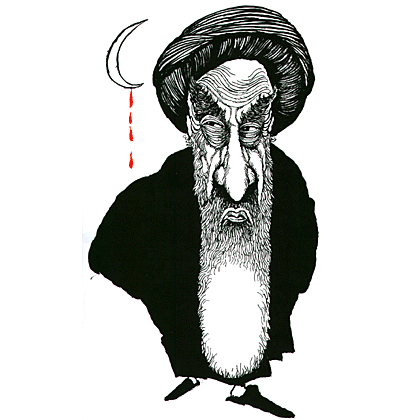
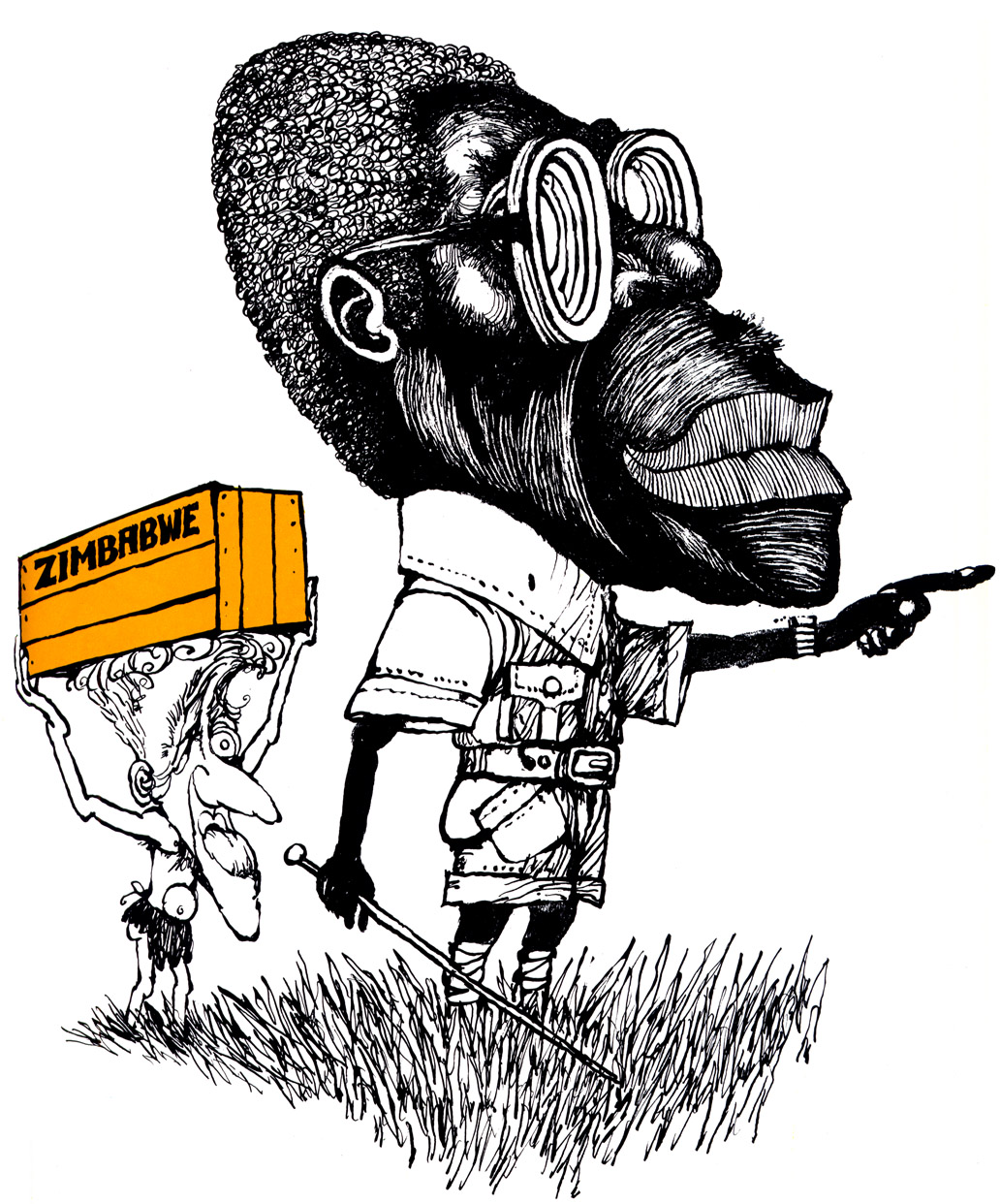
Ian Smith and Robert Mugabe
The model apartments of Alva Carlsson (1909-1992) show rooms from above (she was a textile worker in this building for 25 years) and an exhibit on climate change. Free

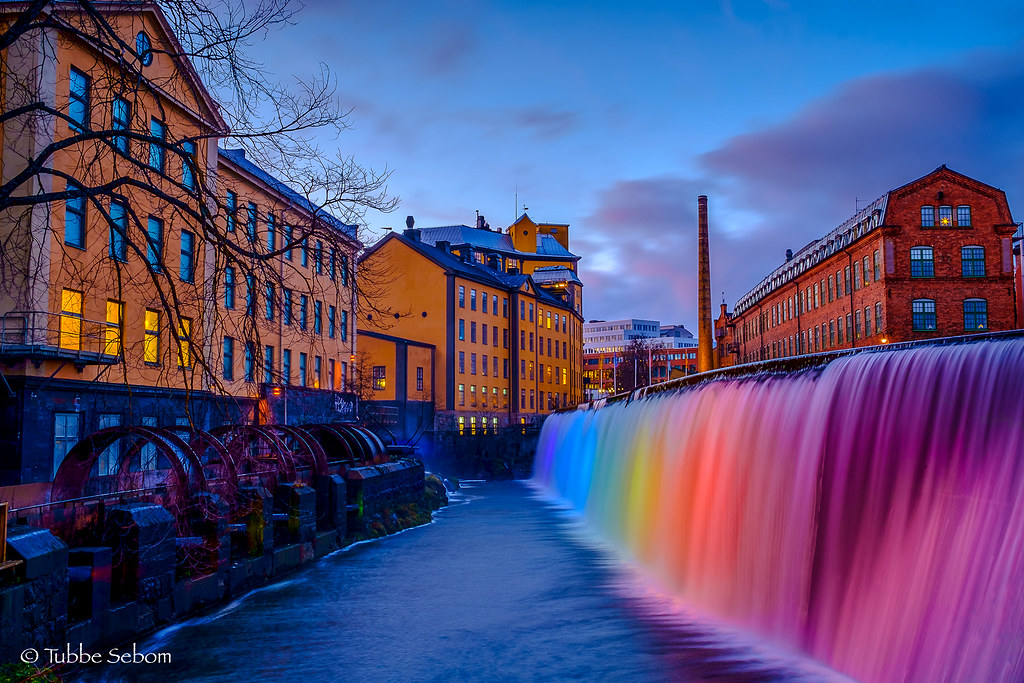
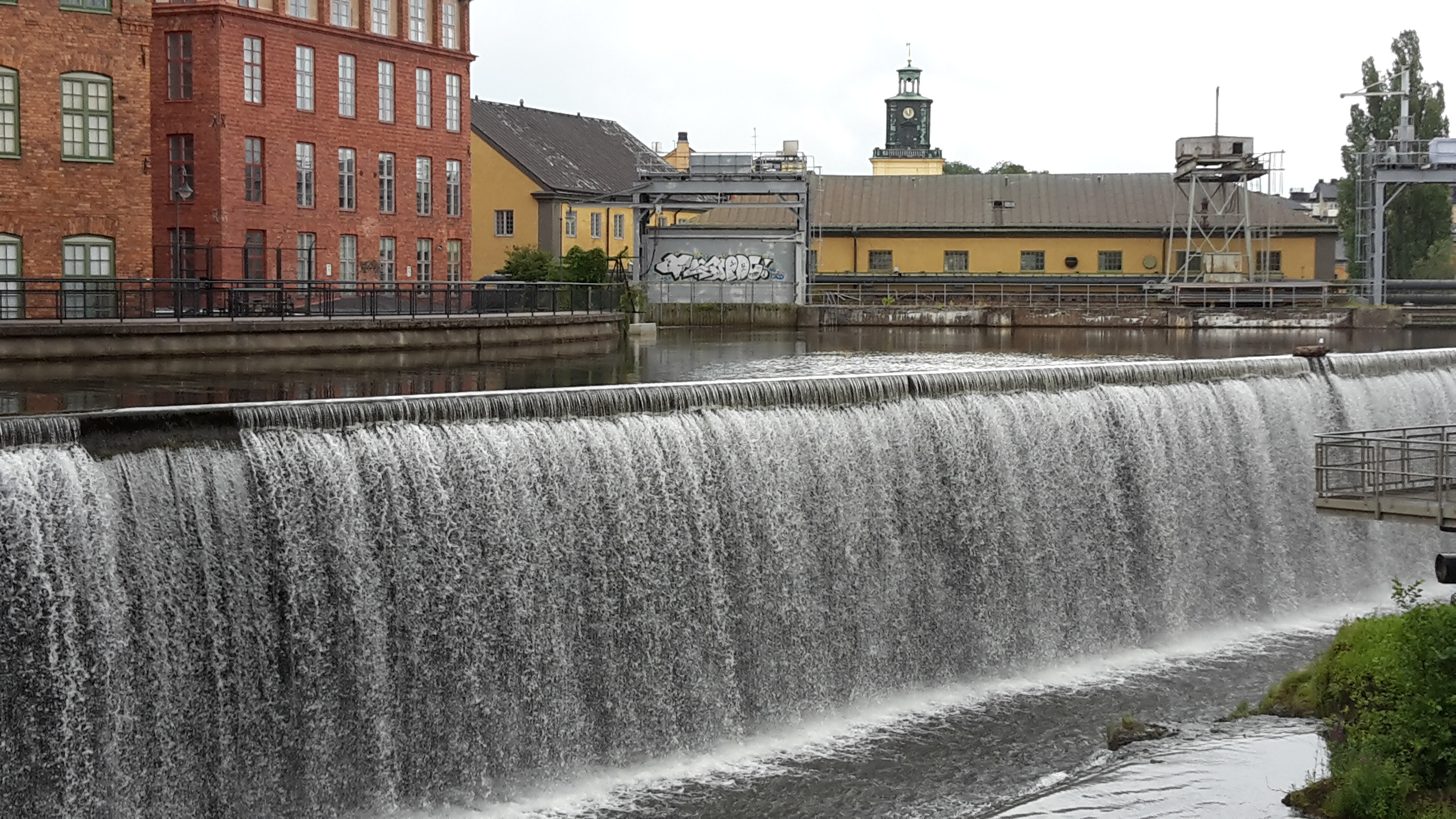
Norrköping Stadsmuseum. This delves into the town’s industrial past complete with still functioning machinery. Free
Norrköpings Konstmuseum. In a lovely building, there were exhibits 20th century Swedish artists (I especially liked Ola Billgren, Otto Carlslund and Martin Tihus) and a temporary one featuring 17th century French graphic art by all the greats. Free
Day 8
Kolmarden Djurpark (Tropicnarium & Aquarium). This a wildlife park with animals in natural (Swedish) settings. Mostly African, there are also some North American animals like bear, moose and wolves. A Marine park has a small aquarium. Other amusement park options are a roller coaster, gondola and 21 restaurants and fast food concessions. It is just east of Norrköping in a rural area above Bråviken Inlet. Parking NOK100, 1-day NOK449, 2-day NOK549
Tullgarn Slott. This is one of the ten Swedish Royal Palaces built in 1772 as a summer retreat. Since 1950, the royal family has summered at Solliden on Öland Island, next to Borgholm Castle. Guided tours in September are only on Saturdays and Sundays. It is in a magnificent setting on a lake with vast gardens and farms surrounding it.
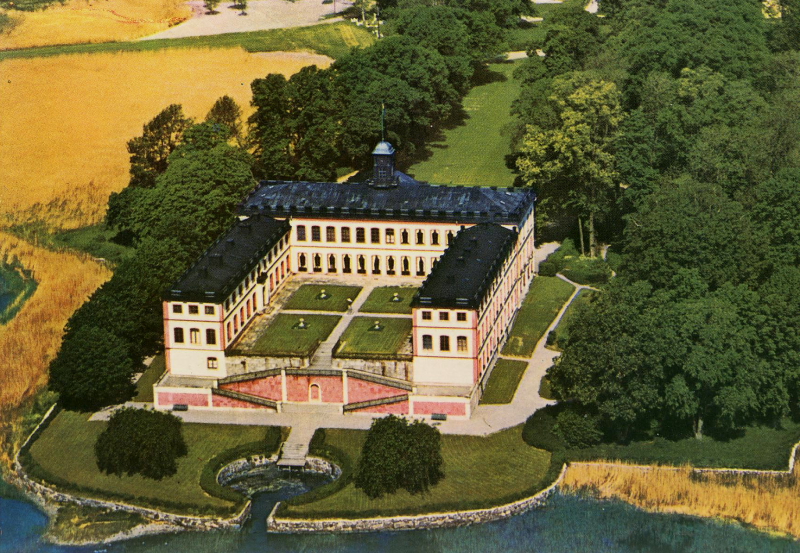
Södertälje. In the NM “European City” series, I visited Svenskakyrken, a lovely church with modern stained glass on two windows and a magnificent baptismal chapel.
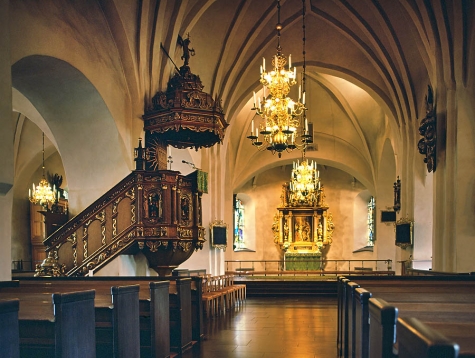
Strömesholm Slott. Another of the 10 Swedish Royal Palaces, it was built in 1556 and decorated by Karl X Gustav’s wife who died 55 years after him. What else does one do with limitless funds but decorate a castle. The Audience Hall has pictures of the king’s horses. An infantry riding school occupied the palace until 1960 but didn’t inhabit the royal apartments. NOK100
